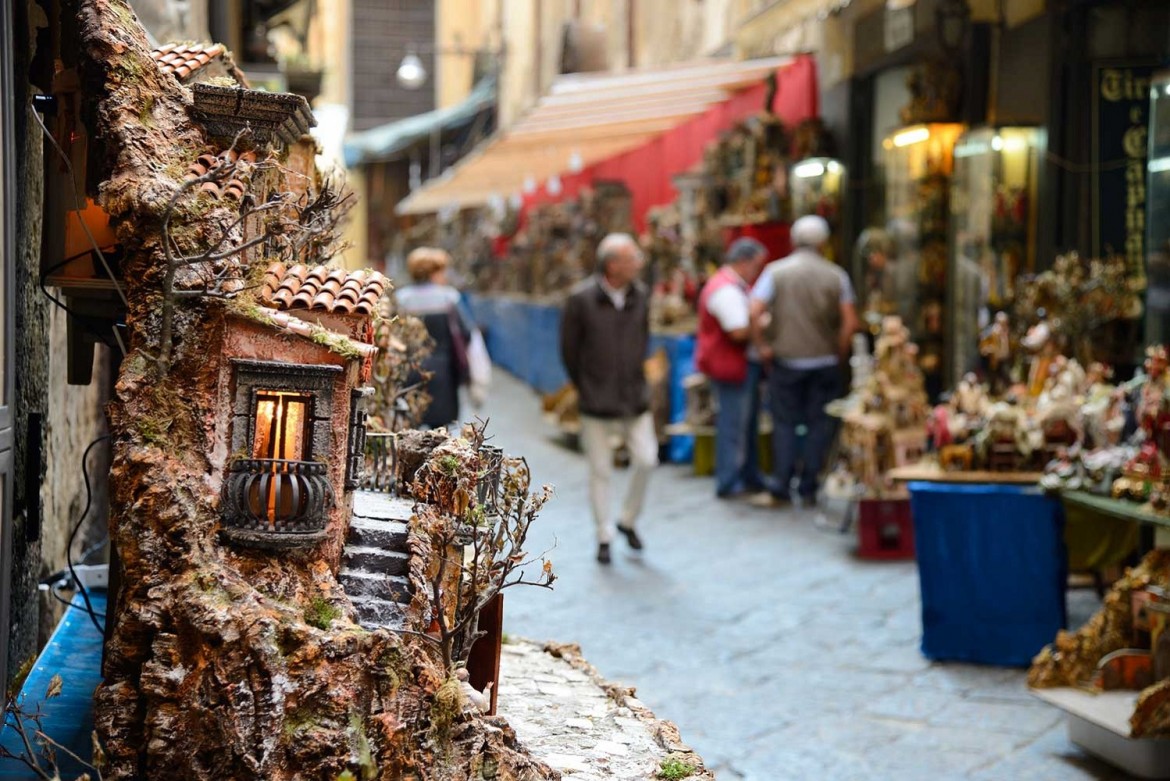Christmas. Time for decorations, gifts, sweets and markets. And in Naples in particular there is a famous street known all over the world: via San Gregorio Armeno. For centuries this artery of the Neapolitan historic center has been a destination for tourists. Both for its stalls and for the atmosphere that is created during the Christmas period. But how did this tradition develop?
From ancient Greece to the present day: via San Gregorio Armeno
Known by the older generation of Neapolitans as San Liguoro, via San Gregorio Armeno is one of the oldest streets in Naples. Already in classical times the road was used to connect two of the three Decumani (the Greek arteries that cross all of Naples). During the Roman period, a temple dedicated to Ceres, the god of earth and fertility, was built along the road. According to legend, it was customary to give her terracotta statuettes as a good omen for the harvest season. On the ruins of the temple the bishop San Nostriano had some baths opened for the poor. Subsequently the structure was enriched with a church. In this church in the eighth century the relics of St. Gregory the Illuminator, patriarch of Armenia, were brought by some nuns led by San Patrizia.

The structure then took the name of the Armenian patriarch, as well as the street. However, the church is also known by the name of Santa Patrizia as, according to a legend, the nuns carrying the Santa's hearse stopped abruptly right in front of the church. This was interpreted as the will of the virgin Patrizia. Finally, at the turn of the seventeenth and eighteenth centuries, the tradition of the Neapolitan crib developed. The artisans chose to exhibit their creations along via San Gregorio Armeno both for the pagan legend of Ceres and for the devotion to San Gregorio and Santa Patrizia.
Il presepe napoletano
The art of the nativity scene was born several centuries ago. To be precise around the thirteenth century when St. Francis, at the hermitage of Greccio, created a representation of the Nativity with some statuettes. From that moment the custom of the nativity scene began to spread in places of worship. For centuries, however, it remained a custom confined to churches and monasteries. Only around the seventeenth century did the Neapolitan aristocrats begin to create personal representations of the Nativity. The reason was not only religious, but also of pride. The best artists and artisans were thus involved to create more and more scenic nativity scenes. The nativity scene was transformed into something more and more artistic, also influenced by the Baroque style which was experiencing its best period in those years. Several streets in the historic center were transformed into real exhibitions of various artists, and San Gregorio Armeno became the symbolic place of the Neapolitan crib.





